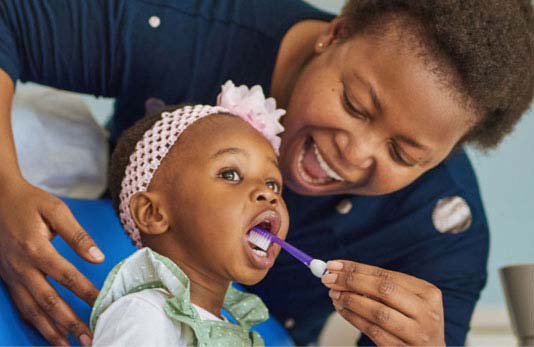6 tips and tricks for avoiding scary Halloween treats
How to keep kids' teeth healthy during Halloween

1. Be selective.
Choose treats that cause the least damage to teeth. Instead of caramels and hard candies, choose chocolates, which are swallowed quickly and don’t stick to teeth. Avoid any candies that are chewy or acidic, like sour candies. Don't forget that even “healthy” snacks like pretzels and crackers can promote decay.
2. Go trick-or-treating on a full stomach.
Staying full can limit the urge to gorge on Halloween sweets.
3. Limit the amount of time that sugar is in contact with your child’s teeth.
When buying candy for Halloween, look for treats that can be eaten quickly, like miniature candy bars. When you get home from trick-or-treating, discard hard or sticky candies like sugared fruit snacks, caramels or lollipops, as they increase the period of time in which teeth are exposed to sugar.
Encourage your child to eat a small amount of candy in one sitting followed by a glass of water and thorough tooth brushing. Don't allow your child to graze on candy as this will increase the amount of time sugar comes in contact with teeth.

4. Teach your child to eat all foods in moderation.
Although sweets are often blamed for tooth decay, all foods — even healthy alternatives to candy, such as fruit and nuts — can promote tooth decay if eaten in excess. Like adults, children should eat all foods in moderation. Read nutrition labels to avoid foods and drinks loaded with sugar, fructose and other sweeteners.
5. Set up a candy bank.
Allow your child to make daily withdrawals from the bank and monitor progress. This way, you can control how much candy your child consumes.
6. Use fluoride to fight cavities.
Fluoride can dramatically reduce the damage caused by tooth decay. The most common ways to use fluoride for cavity prevention are by using fluoridated toothpaste and other products and by drinking fluoridated water.
Children should brush at least twice a day for two minutes with a small (pea-sized) amount of fluoridated toothpaste and rinse with a fluoridated mouth rinse. Fluoride treatments, applied directly onto teeth, are also available in any dentist's office. If your area does not have fluoridated water, talk to your dentist about fluoride supplements.
Last updated October 12, 2021
Related articles:
The oral health information on this website is intended for educational purposes only. Always consult a licensed dentist or other qualified health care professional for any questions concerning your oral health.


